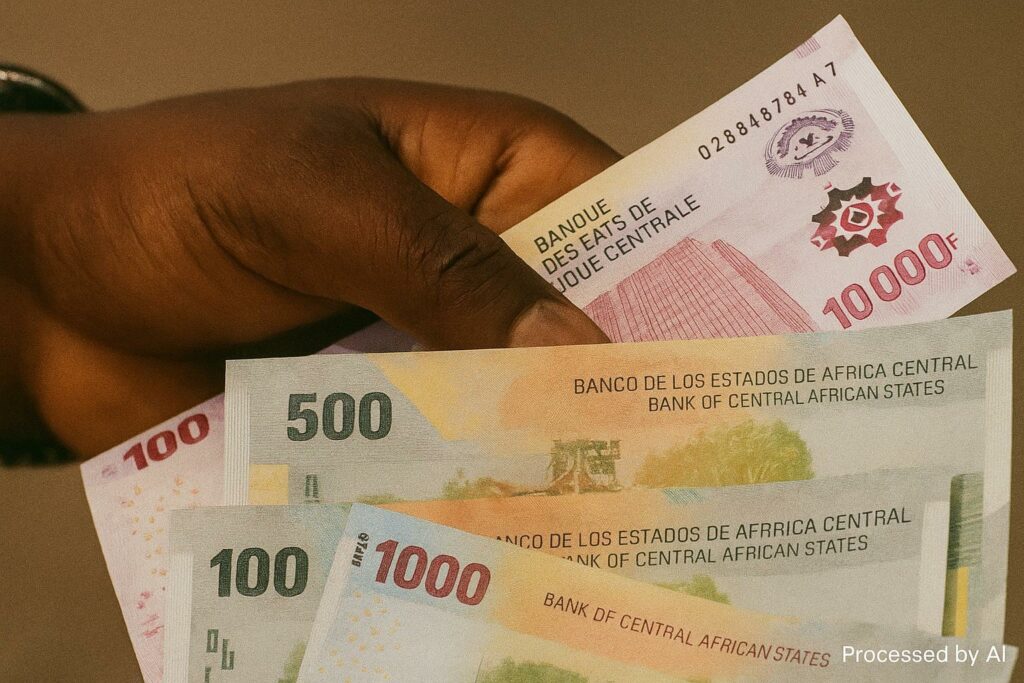Regional monetary pulse reaches a decade high
The Communauté économique et monétaire de l’Afrique centrale closed 2024 with a fiduciary circulation of 5 363.3 billion CFA francs, a level unseen since the 2014 oil-price shock. According to the Banque des États de l’Afrique centrale’s annual compendium, this translates into roughly 9.6 billion United States dollars, marking a year-on-year expansion of 13.03 percent (BEAC Annual Report 2024). The International Monetary Fund’s October 2024 Regional Economic Outlook corroborates the upswing, noting that post-pandemic retail activity, higher hydrocarbon receipts and the gradual normalisation of cross-border trade have jointly lifted cash demand across the six-nation bloc.
Drivers behind the 13 percent expansion
Three intertwined factors explain the acceleration. First, hydrocarbon prices remained comfortably above 80 dollars per barrel for most of the year, granting Cameroon, Congo-Brazzaville and Gabon extra fiscal space to clear domestic arrears and inject liquidity into public works (OPEC Monthly Bulletin, December 2024). Second, the calibrated easing of BEAC’s benchmark rate in early 2024—aimed at nurturing post-COVID recovery—lowered refinancing costs for commercial banks, stimulating credit to small and medium-sized enterprises. Third, the progressive reopening of the Nigerian land border in May catalysed informal trade flows that are traditionally cash-intensive, a phenomenon highlighted in the African Development Bank’s cross-border trade survey.
Cameroon’s gravitational pull on regional banking
Out of the 56 licensed banks operating under BEAC supervision, 19 are headquartered in Cameroon. These institutions originated two-thirds of all fresh loans granted within CEMAC by September 2024 and absorbed 70 percent of sovereign securities issued on the regional debt platform. Cameroon’s banking pre-eminence is hardly new, yet the scale of its dominance—housing 44 percent of the bloc’s cash stock—raises questions about concentration risk. Senior BEAC officials, speaking in Yaoundé in November, insisted that prudential buffers remain robust, citing an average capital adequacy ratio of 14 percent, above the 8 percent Basel II floor.
Congo-Brazzaville’s measured leverage of fresh liquidity
With 612.5 billion CFA francs in banknotes circulating nationwide, Congo-Brazzaville commands 11.42 percent of the CEMAC cash pool. Brazzaville’s authorities have channelled the liquidity bump into targeted infrastructure corridors, notably the Special Economic Zone of Pointe-Noire and the recent expansion of the Route Nationale 1 toward Ouesso. According to the Ministry of Finance’s mid-year budget execution report, domestic borrowing costs fell by 55 basis points between March and October, easing the rollover of short-term treasury bills. International observers view this as evidence of disciplined macro-management after the 2022 debt restructuring, an assessment echoed in the IMF’s fourth review under the Extended Credit Facility.
Macroeconomic spill-overs for the wider CEMAC market
The surge in fiduciary volume is a double-edged sword. On one side, deeper money supply can lubricate commerce, enlarge fiscal headroom and fortify social-sector spending. On the other, it may rekindle inflationary pressures that had already touched 5.2 percent in late 2023, above BEAC’s 3 percent target. The central bank has responded with calibrated open-market operations, mopping up surplus reserves while abstaining from abrupt tightening. Economists at the University of Douala argue that the credible exchange-rate anchor provided by the CFA franc’s peg to the euro lowers the risk of a de-anchoring of expectations, provided fiscal consolidation stays on course.
Digital finance as a structural safety valve
A less visible, yet structurally significant, dimension of the cash surge lies in the parallel rise of electronic money. BEAC data show mobile-money transactions exceeding 17 percent of GDP in 2024, up from 11 percent two years earlier. By migrating micro-payments toward digital channels, Congo-Brazzaville’s regulators aim to reduce physical cash dependency, clamp down on counterfeit circulation and improve tax collection efficiency. The national telecom regulator ARPCE announced in December that two additional e-money issuers received provisional licences, signalling official intent to weave digital rails into the very fabric of monetary governance.
Prospects for coordinated monetary governance
Looking ahead, BEAC Governor Abbas Mahamat Tolli has hinted at a gradual normalisation of policy rates during the first half of 2025, contingent on headline inflation moderating below 4 percent. The proposed timeline dovetails with a joint CEMAC finance ministers’ communiqué issued in Brazzaville this January, which underscores the necessity of synchronising fiscal paths to preserve external reserves. For Congo-Brazzaville, steady fiscal discipline paired with cautious monetary accommodation could foster a virtuous loop of investor confidence, enhancing the country’s ability to tap both regional and international capital markets.
A cautiously optimistic regional outlook
The 2024 liquidity swell is emblematic of a region in controlled—albeit uneven—recovery. While Cameroon’s outsized banking hub continues to set the tempo, Congo-Brazzaville has leveraged its share of the cash tide with notable prudence, converting liquidity into tangible infrastructure and softer borrowing terms. Should the sub-region sustain its newfound policy coordination, the 9.6 billion-dollar cash pool may evolve from a statistical curiosity into a genuine catalyst for inclusive growth.

